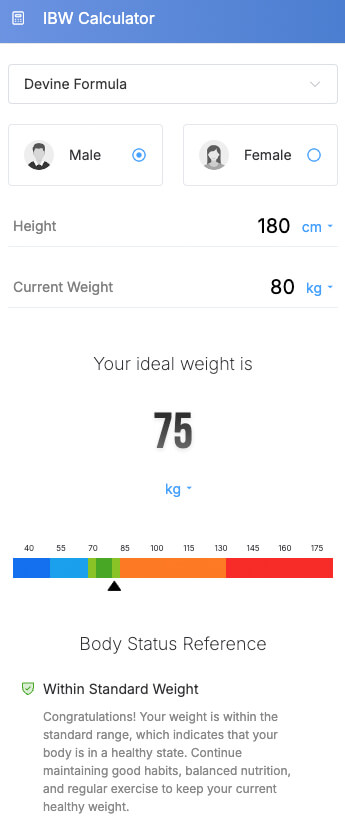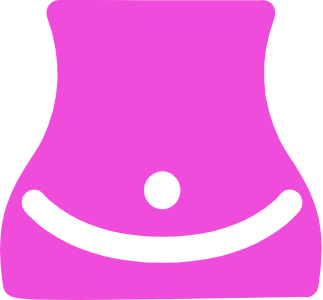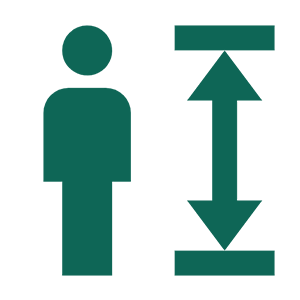3-Step Guide to Calculating Percent Ideal Body Weight: Methods and Applications
In health management, we often focus on weight, but weight alone doesn’t fully capture a person’s health status. Percent Ideal Body Weight (PIBW) is a practical measure that can help you understand how close your current weight is to an ideal, healthy range.
Imagine knowing your current weight but wondering whether it’s truly healthy or if it needs adjustment. PIBW is a simple tool to quickly estimate how far you are from an ideal weight. If your weight percentage is within the ideal range, this typically suggests a healthier weight; if it’s significantly off, it might be a good idea to consider changes through diet or exercise.
PIBW plays a valuable role in weight management, whether your goal is to lose fat, gain weight, or maintain your current weight. It allows you to see your progress more clearly with each step. Next, we’ll walk you through calculating this index in three easy steps and interpreting different percentage results so you can confidently manage your health!
Step 1: Understanding and Determining Ideal Body Weight
Before calculating PIBW, let’s clarify what we mean by “ideal body weight.” Ideal body weight is the weight range associated with optimal health. It’s typically calculated based on factors like height and gender, unlike pure weight measurements that don’t account for individual characteristics.
Methods for Calculating Ideal Body Weight
Here are a few common formulas to estimate your ideal weight:
Robinson Formula:
- For men:
- For women:
Devine Formula (frequently used in medical settings):
- For men:
- For women:
Miller Formula:
- For men:
- For women:
Each formula is based on a slightly different standard, so the ideal weight may vary. Choosing the most suitable ideal weight can help you better assess the gap between your current weight and a healthy state. To find your ideal weight quickly, use Healthycalc’s Ideal Body Weight Calculator. Just enter a few basic details, and it will provide your ideal weight, setting the foundation for the next steps.

Step 2: Calculate Percent Ideal Body Weight (PIBW)
Once you have your ideal weight, you can calculate PIBW. This percentage shows how close you are to an ideal weight and helps you judge whether any adjustments are needed.
PIBW Calculation Formula
To calculate PIBW, use the following formula:
$$ \text{Percent Ideal Body Weight (PIBW)} = \left( \frac{\text{Current Weight}}{\text{Ideal Weight}} \right) \times 100 $$Where:
- Current Weight is your actual weight in kilograms.
- Ideal Weight is the value you calculated in Step 1.
Steps to Calculate PIBW
Record Your Current Weight: First, jot down your actual weight (in kg).
Get Your Ideal Weight: Use the value from Step 1. If you need an ideal weight estimate, go back to Step 1 and try Healthycalc’s Ideal Body Weight Calculator.
Insert Values into the Formula:
- Interpret the Result:
- Below 90%: Underweight, consider weight gain.
- 90-110%: Within ideal range, generally healthy.
- Above 110%: Over ideal range, weight loss may be beneficial.
Example
Let’s say a user’s current weight is 70 kg, and their ideal weight is 65 kg. The PIBW calculation would be:
$$ \text{PIBW} = \left( \frac{70}{65} \right) \times 100 = 107.7 $$This result, 107.7%, indicates the user is slightly above the ideal range.
Step 3: Interpreting PIBW Results
After calculating PIBW, the next step is to understand what the result means. Different PIBW ranges correspond to different health implications, helping you assess whether any weight adjustments are advisable.
Interpreting PIBW Ranges
Here’s a general guide for understanding PIBW ranges and the recommended actions for each:
Below 90%: Underweight
- A PIBW under 90% suggests you may be underweight, which can reduce strength, weaken immunity, and increase osteoporosis risk.
- Recommendation: Consider increasing nutrient intake, especially protein and healthy fats. Pairing this with strength training can help achieve a healthy weight.
90-110%: Ideal Range
- A PIBW between 90-110% indicates your weight is in a generally healthy range. This balance supports body function and immunity.
- Recommendation: Maintain your weight management habits, focus on a balanced diet and moderate exercise, and avoid drastic weight changes.
Above 110%: Over Ideal Range
- A PIBW over 110% may indicate an overweight status, increasing the risk of cardiovascular disease, diabetes, and other conditions.
- Recommendation: Consider lowering calorie intake and adding aerobic exercise to gradually reduce weight and return to a healthy range.
PIBW Interpretation for Special Groups
Certain groups may need additional consideration when interpreting PIBW results:
Athletes:
- Athletes, especially strength-based athletes, may have a PIBW above 110% due to muscle mass, which doesn’t necessarily mean unhealthy weight.
- Advice: Athletes should assess their weight and health by combining PIBW with other factors like body fat percentage and muscle mass.
Pregnant Women:
- Pregnant women naturally gain weight as pregnancy progresses, so PIBW often exceeds 110% during this time.
- Advice: Pregnancy weight should be evaluated with medical guidance rather than relying solely on PIBW.
Older Adults:
- Aging often brings muscle loss, which can result in a PIBW within the ideal range despite higher body fat.
- Advice: Older adults should use PIBW alongside body composition measures like body fat percentage and muscle mass to ensure accurate health insights.
Teens and Children:
- The ideal weight for youth changes with growth and development, so adult PIBW standards may not apply.
- Advice: Parents should consult doctors or nutritionists to ensure age-appropriate health assessments.
Integrating PIBW into Health Management
PIBW is not an isolated number; it’s a valuable part of your health management toolkit. For a more complete picture of health, consider combining PIBW with other indicators (like BMI and body fat percentage).
Practical Use: Applying PIBW to Daily Health Management
PIBW is more than a calculation—it’s a tool for healthy living. By tracking PIBW regularly, you can monitor weight changes and make adjustments when needed. Here are some practical ways to apply PIBW in your health journey:
1. Weight Control and Health Assessment
- Weight Gain or Loss Plans: PIBW helps set specific goals, such as gaining weight if below 90% or initiating a weight loss plan if above 110%.
- Continuous Health Monitoring: Regular PIBW tracking helps detect weight trends, making it easier to manage sudden weight changes.
2. Nutritional Adjustments
- Diet Changes: PIBW can guide dietary adjustments. Underweight users can boost protein, healthy fats, and calorie-dense foods, while overweight users might reduce caloric intake and choose high-fiber, low-fat options.
- Daily Meal Planning: Use PIBW with daily meal planning to keep your weight within the ideal range or adjust when necessary. Tools like Healthycalc’s calorie calculator can further support a healthy diet plan.
3. Optimizing Exercise
- Choosing Exercise Types and Intensity: PIBW can help determine suitable exercise. Higher PIBW users may benefit from aerobic exercises, while lower PIBW users can focus on strength training to build muscle.
- Creating Long-term Exercise Plans: Regular PIBW monitoring allows you to tailor exercise plans based on weight trends, making workouts more effective.
4. Tracking Mental and Health Status
- Build Confidence in Health Management: Tracking PIBW not only aids in weight management but also strengthens your sense of control over health, boosting confidence as you see progress.
- Reducing Stress: PIBW provides a rational approach to weight management, offering a healthier perspective on weight fluctuations.
5. Combine PIBW with Other Health Metrics
- Holistic Health Evaluation: Use PIBW with other metrics like BMI and body fat to get a well-rounded view of weight and health. For example, BMI and body fat percentage provide detailed body composition insights, while PIBW helps set weight goals.
- Leverage Healthycalc Tools: Healthycalc offers a range of health tools like the BMR Calculator, TDEE Calculator, and Waist-to-Hip Ratio Calculator, enabling comprehensive health management.
References
- WHO Weight Management Guide: WHO provides global guidelines on ideal and healthy weight ranges.
- American Heart Association (AHA) Weight Recommendations: AHA's recommendations cover ideal weight, BMI, and other health indicators, particularly for cardiovascular health.
- Clinical Nutrition & Metabolism: This textbook covers PIBW methods, range references, and clinical applications in nutrition.
- Journal of Nutrition Studies: Articles in this journal explore the scientific principles of ideal weight, BMI, and PIBW in weight management.
- Exercise & Nutrition Science: This book offers guidance on adjusting PIBW through nutrition and exercise, especially for athletes, youth, and pregnant women.












 EN
EN









